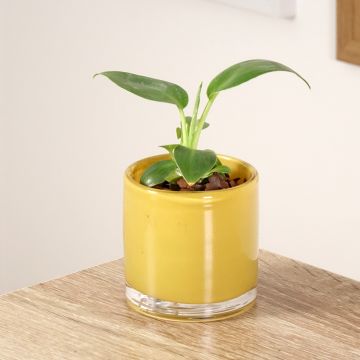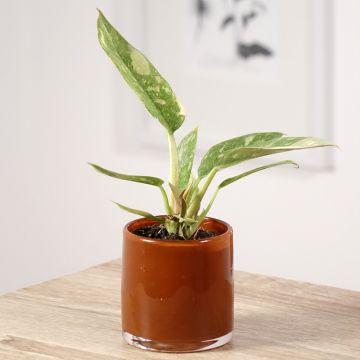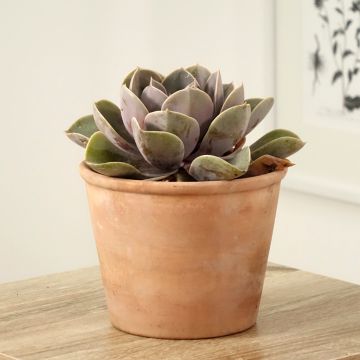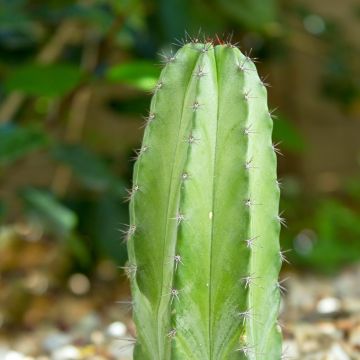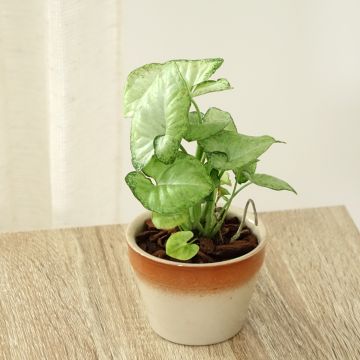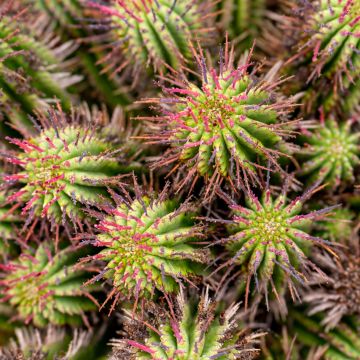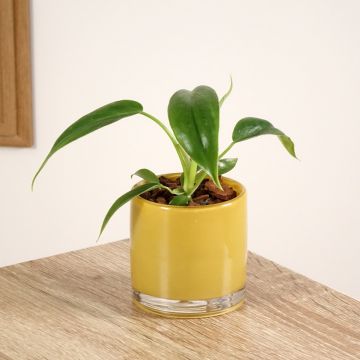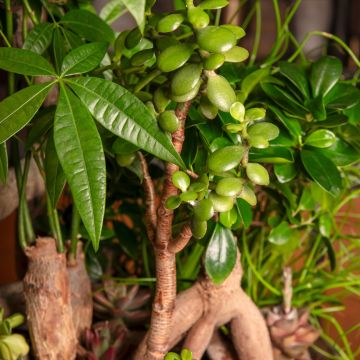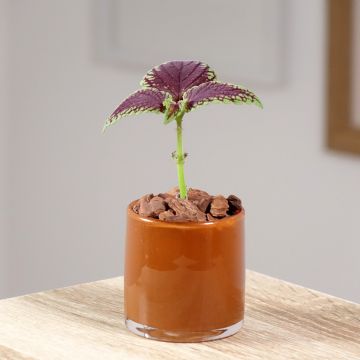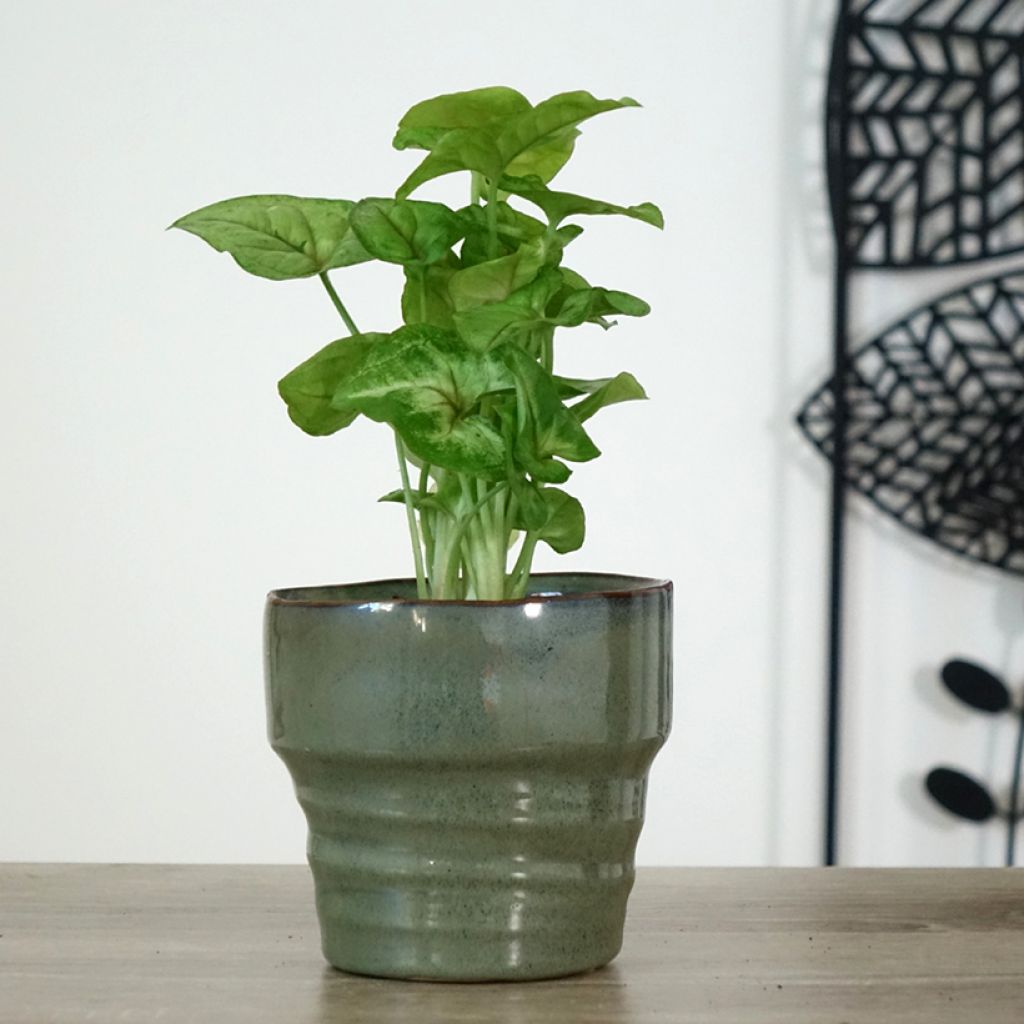

Syngonium podophyllum Golden Allusion - Arrowhead vine
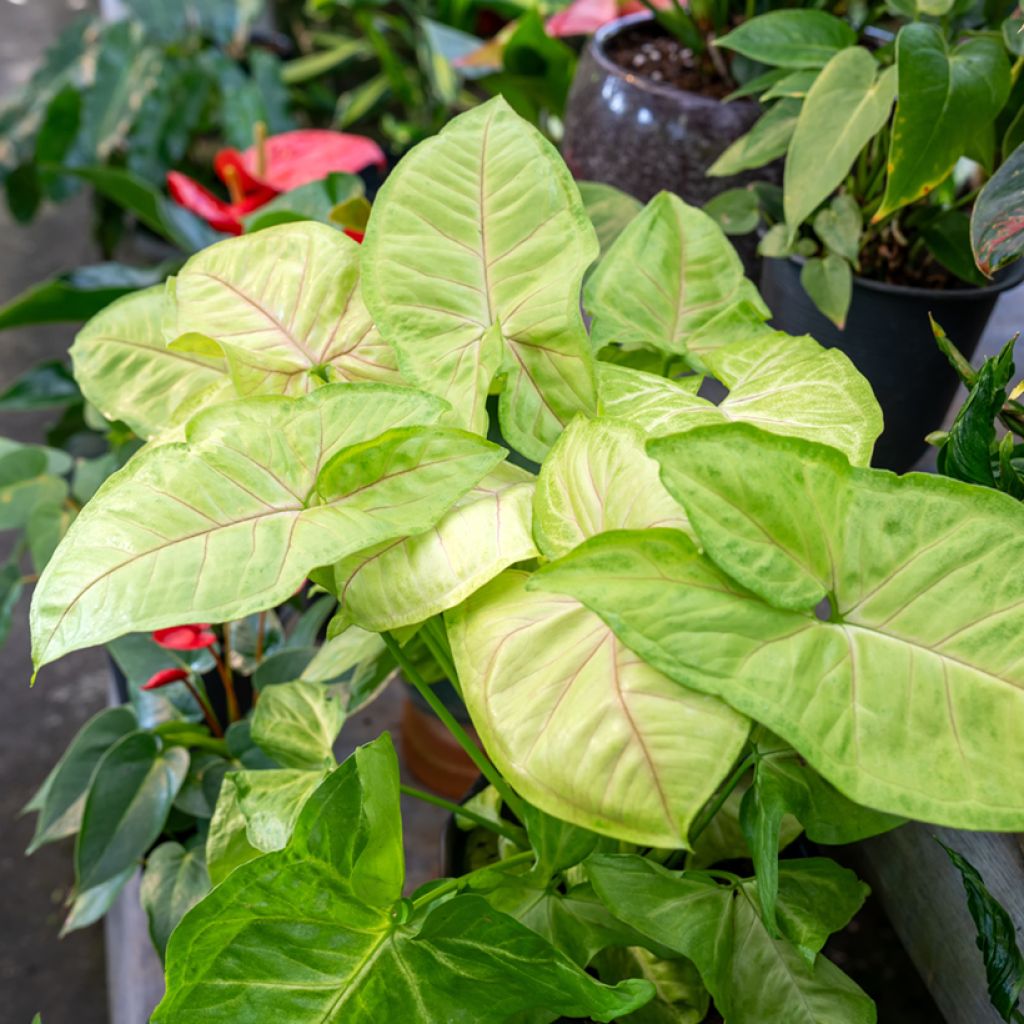

Syngonium podophyllum Golden Allusion - Arrowhead vine
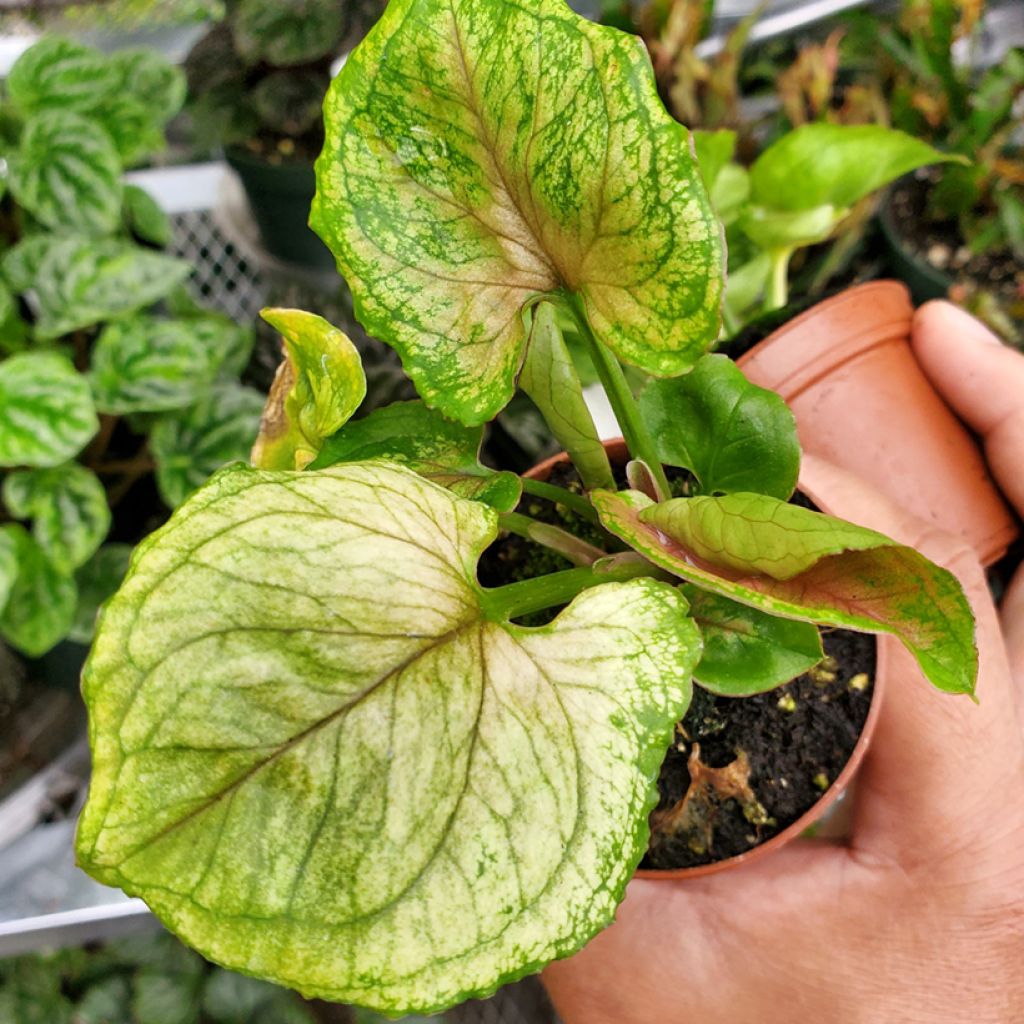

Syngonium podophyllum Golden Allusion - Arrowhead vine
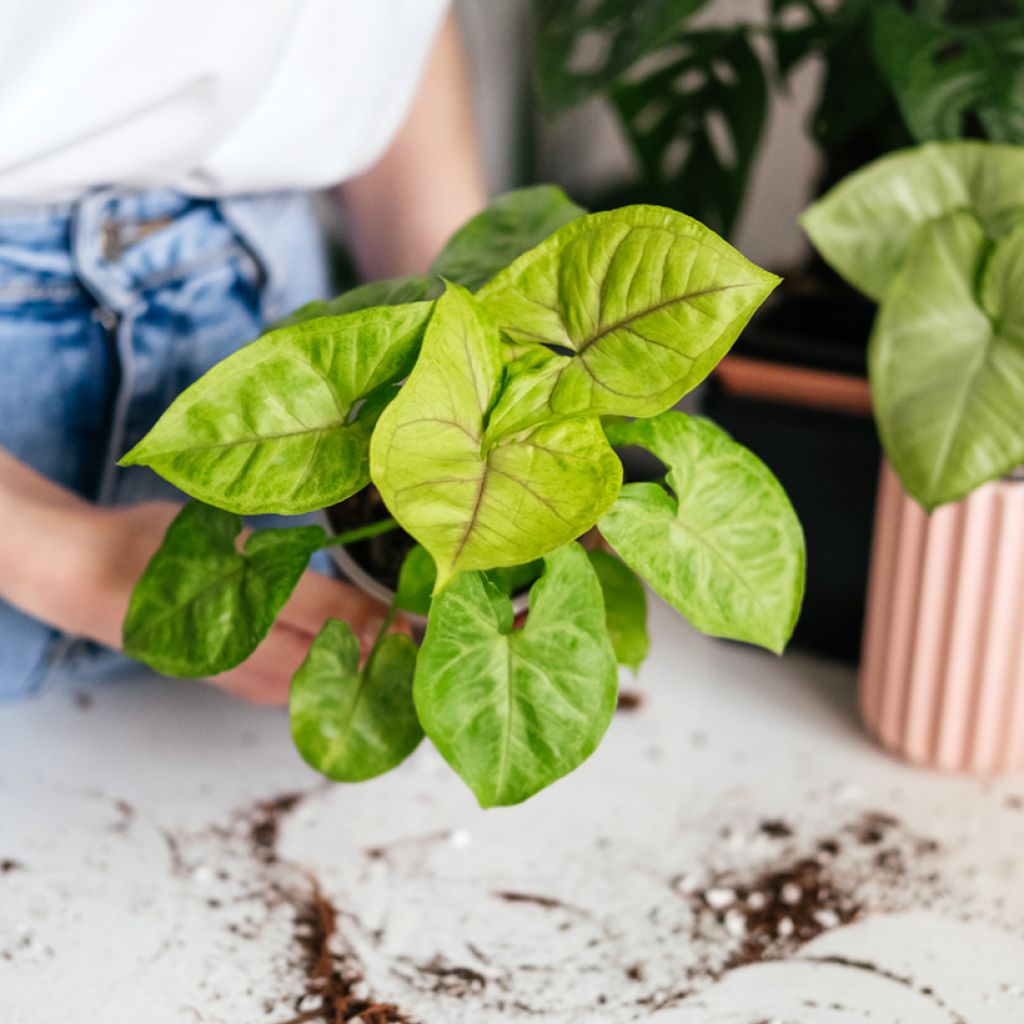

Syngonium podophyllum Golden Allusion - Arrowhead vine
Syngonium podophyllum Golden Allusion - Arrowhead vine
Syngonium podophyllum Golden Allusion
Arrowhead vine, African evergreen, nephthytis
This item cannot be shipped to the selected country
Delivery charge from 6,90 €
More information
Shipping country:
-
-
-
-
-
-
-
-
-
-
-
-
-
-
-
-
-
-
-
-
-
-
-
-
-
-
-
-
-
-
-
-
Schedule delivery date,
and select date in basket
This plant carries a 30 days recovery warranty
More information
We guarantee the quality of our plants for a full growing cycle, and will replace at our expense any plant that fails to recover under normal climatic and planting conditions.
From 7,90 € for pickup delivery and 6,90 € for home delivery
Express home delivery from 8,90 €.
Description
With its bright foliage, the Syngonium ‘Golden Allusion’, or 'Goosefoot' will brighten up your interior living space. Its arrow-shaped leaves tinged with soft green and pale gold will adorn a bright corner of your living room or office. This plant can either climb or trail depending on how it is grown, and could be placed on a shelf to create a green curtain. Position it in a spot without direct sunlight and mist its leaves regularly to mimic its tropical habitat. It is a relatively easy variety to cultivate.
The Syngonium podophyllum 'Golden Allusion' belongs to the Araceae family. This horticultural cultivar is prized for its decorative, light-coloured foliage. At maturity, the plant reaches 30 to 60 cm in height and 30 to 45 cm in width, depending on growing conditions and pot size. Its habit is generally upright when young, becoming climbing or trailing with age, depending on the support provided. Its growth is moderately fast, with continuous development throughout the year. The leaves measure between 7 and 15 centimetres in length. They feature a characteristic arrowhead shape, with a smooth texture and shades of light green, marbled with pale golden yellow, and are marked by pale pink veins. Flowering indoors is rare; when it occurs, the flowers are discreet, pale green to whitish, forming the characteristic spathes of the Araceae family. This plant is toxic if ingested.
The Syngonium genus includes around 36 species, native to the humid tropical forests of Central and South America, particularly Mexico, Guatemala, Costa Rica, and Brazil. In their natural habitat, these plants grow up trees, benefiting from the dappled light of the canopy. Indoors, they prefer indirect light, high ambient humidity, and a well-draining substrate. It is important to maintain a stable temperature, ideally between 18 and 24°C, and to avoid cold draughts.
The Syngonium 'Golden Allusion' complements many design styles. Its bright and refined foliage works wonders in tropical or bohemian settings, but also in Scandinavian or minimalist spaces where its soft tones bring warmth and vitality. Place it in a terracotta pot for a rustic touch or in a gold cache-pot to enhance its brilliance in a contemporary interior. Displayed on a shelf, in a hanging planter, or climbing a support, it can be paired with a Pothos ‘Marble Queen’ or a Philodendron ‘Brasil’ to create a harmonious green display.
Report an error about the product description
Syngonium podophyllum Golden Allusion - Arrowhead vine in pictures
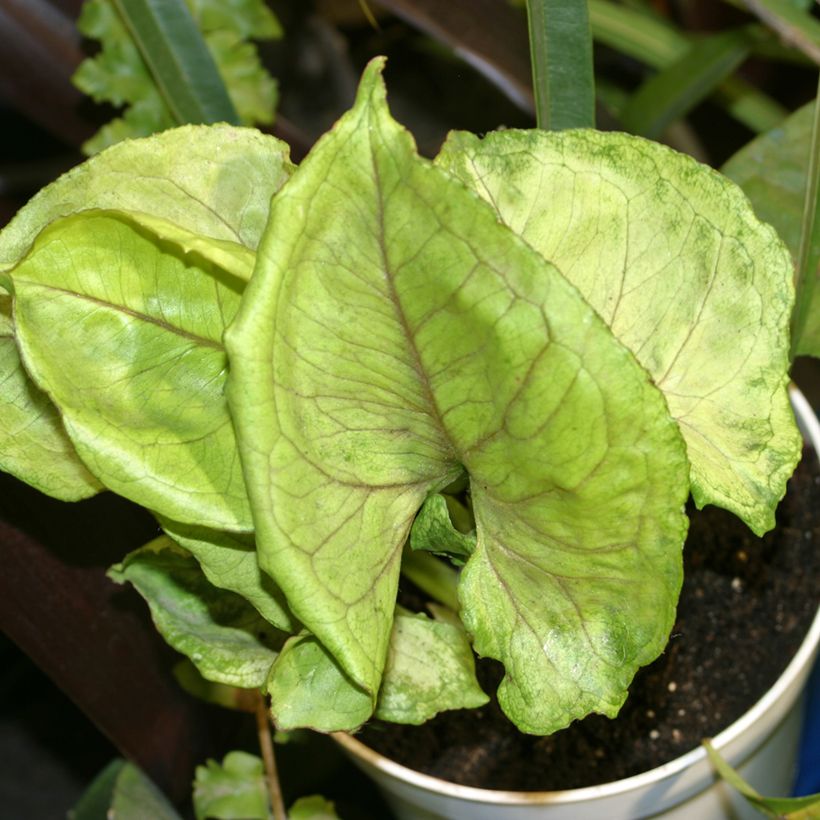

Foliage
Plant habit
Flowering
Botanical data
Syngonium
podophyllum
Golden Allusion
Araceae
Arrowhead vine, African evergreen, nephthytis
Cultivar or hybrid
Safety measures
Other Houseplants
View all →Location
Location
Maintenance and care
Potting advice, substrates and fertilisers
Houseplant care
Disease and pest advice
Maintenance and care
This item has not been reviewed yet - be the first to leave a review about it.
Haven't found what you were looking for?
Hardiness is the lowest winter temperature a plant can endure without suffering serious damage or even dying. However, hardiness is affected by location (a sheltered area, such as a patio), protection (winter cover) and soil type (hardiness is improved by well-drained soil).

Photo Sharing Terms & Conditions
In order to encourage gardeners to interact and share their experiences, Promesse de fleurs offers various media enabling content to be uploaded onto its Site - in particular via the ‘Photo sharing’ module.
The User agrees to refrain from:
- Posting any content that is illegal, prejudicial, insulting, racist, inciteful to hatred, revisionist, contrary to public decency, that infringes on privacy or on the privacy rights of third parties, in particular the publicity rights of persons and goods, intellectual property rights, or the right to privacy.
- Submitting content on behalf of a third party;
- Impersonate the identity of a third party and/or publish any personal information about a third party;
In general, the User undertakes to refrain from any unethical behaviour.
All Content (in particular text, comments, files, images, photos, videos, creative works, etc.), which may be subject to property or intellectual property rights, image or other private rights, shall remain the property of the User, subject to the limited rights granted by the terms of the licence granted by Promesse de fleurs as stated below. Users are at liberty to publish or not to publish such Content on the Site, notably via the ‘Photo Sharing’ facility, and accept that this Content shall be made public and freely accessible, notably on the Internet.
Users further acknowledge, undertake to have ,and guarantee that they hold all necessary rights and permissions to publish such material on the Site, in particular with regard to the legislation in force pertaining to any privacy, property, intellectual property, image, or contractual rights, or rights of any other nature. By publishing such Content on the Site, Users acknowledge accepting full liability as publishers of the Content within the meaning of the law, and grant Promesse de fleurs, free of charge, an inclusive, worldwide licence for the said Content for the entire duration of its publication, including all reproduction, representation, up/downloading, displaying, performing, transmission, and storage rights.
Users also grant permission for their name to be linked to the Content and accept that this link may not always be made available.
By engaging in posting material, Users consent to their Content becoming automatically accessible on the Internet, in particular on other sites and/or blogs and/or web pages of the Promesse de fleurs site, including in particular social pages and the Promesse de fleurs catalogue.
Users may secure the removal of entrusted content free of charge by issuing a simple request via our contact form.
The flowering period indicated on our website applies to countries and regions located in USDA zone 8 (France, the United Kingdom, Ireland, the Netherlands, etc.)
It will vary according to where you live:
- In zones 9 to 10 (Italy, Spain, Greece, etc.), flowering will occur about 2 to 4 weeks earlier.
- In zones 6 to 7 (Germany, Poland, Slovenia, and lower mountainous regions), flowering will be delayed by 2 to 3 weeks.
- In zone 5 (Central Europe, Scandinavia), blooming will be delayed by 3 to 5 weeks.
In temperate climates, pruning of spring-flowering shrubs (forsythia, spireas, etc.) should be done just after flowering.
Pruning of summer-flowering shrubs (Indian Lilac, Perovskia, etc.) can be done in winter or spring.
In cold regions as well as with frost-sensitive plants, avoid pruning too early when severe frosts may still occur.
The planting period indicated on our website applies to countries and regions located in USDA zone 8 (France, United Kingdom, Ireland, Netherlands).
It will vary according to where you live:
- In Mediterranean zones (Marseille, Madrid, Milan, etc.), autumn and winter are the best planting periods.
- In continental zones (Strasbourg, Munich, Vienna, etc.), delay planting by 2 to 3 weeks in spring and bring it forward by 2 to 4 weeks in autumn.
- In mountainous regions (the Alps, Pyrenees, Carpathians, etc.), it is best to plant in late spring (May-June) or late summer (August-September).
The harvesting period indicated on our website applies to countries and regions in USDA zone 8 (France, England, Ireland, the Netherlands).
In colder areas (Scandinavia, Poland, Austria...) fruit and vegetable harvests are likely to be delayed by 3-4 weeks.
In warmer areas (Italy, Spain, Greece, etc.), harvesting will probably take place earlier, depending on weather conditions.
The sowing periods indicated on our website apply to countries and regions within USDA Zone 8 (France, UK, Ireland, Netherlands).
In colder areas (Scandinavia, Poland, Austria...), delay any outdoor sowing by 3-4 weeks, or sow under glass.
In warmer climes (Italy, Spain, Greece, etc.), bring outdoor sowing forward by a few weeks.


































